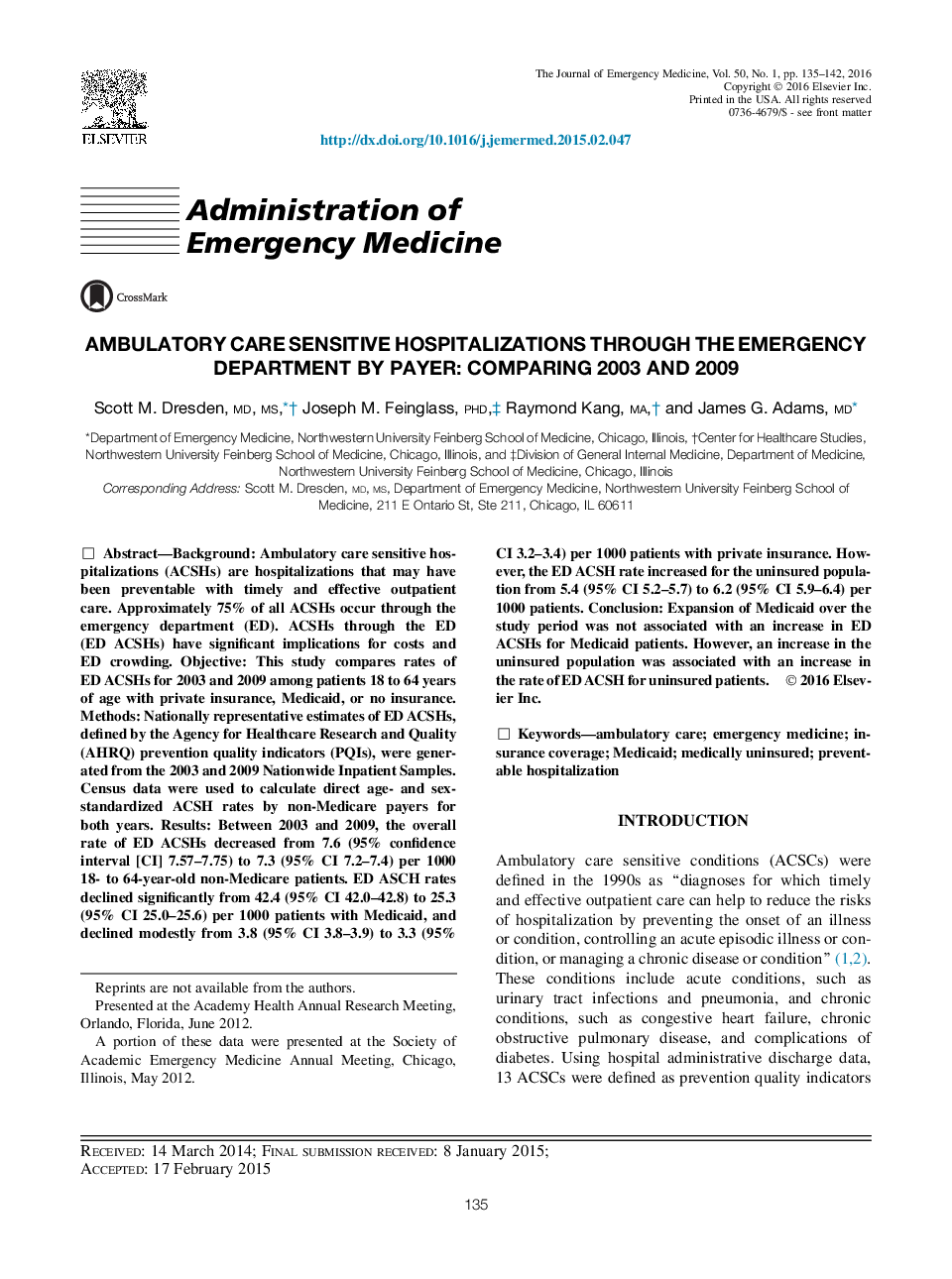| Article ID | Journal | Published Year | Pages | File Type |
|---|---|---|---|---|
| 6085058 | The Journal of Emergency Medicine | 2016 | 8 Pages |
BackgroundAmbulatory care sensitive hospitalizations (ACSHs) are hospitalizations that may have been preventable with timely and effective outpatient care. Approximately 75% of all ACSHs occur through the emergency department (ED). ACSHs through the ED (ED ACSHs) have significant implications for costs and ED crowding.ObjectiveThis study compares rates of ED ACSHs for 2003 and 2009 among patients 18 to 64 years of age with private insurance, Medicaid, or no insurance.MethodsNationally representative estimates of ED ACSHs, defined by the Agency for Healthcare Research and Quality (AHRQ) prevention quality indicators (PQIs), were generated from the 2003 and 2009 Nationwide Inpatient Samples. Census data were used to calculate direct age- and sex-standardized ACSH rates by non-Medicare payers for both years.ResultsBetween 2003 and 2009, the overall rate of ED ACSHs decreased from 7.6 (95% confidence interval [CI] 7.57-7.75) to 7.3 (95% CI 7.2-7.4) per 1000 18- to 64-year-old non-Medicare patients. ED ASCH rates declined significantly from 42.4 (95% CI 42.0-42.8) to 25.3 (95% CI 25.0-25.6) per 1000 patients with Medicaid, and declined modestly from 3.8 (95% CI 3.8-3.9) to 3.3 (95% CI 3.2-3.4) per 1000 patients with private insurance. However, the ED ACSH rate increased for the uninsured population from 5.4 (95% CI 5.2-5.7) to 6.2 (95% CI 5.9-6.4) per 1000 patients.ConclusionExpansion of Medicaid over the study period was not associated with an increase in ED ACSHs for Medicaid patients. However, an increase in the uninsured population was associated with an increase in the rate of ED ACSH for uninsured patients.
